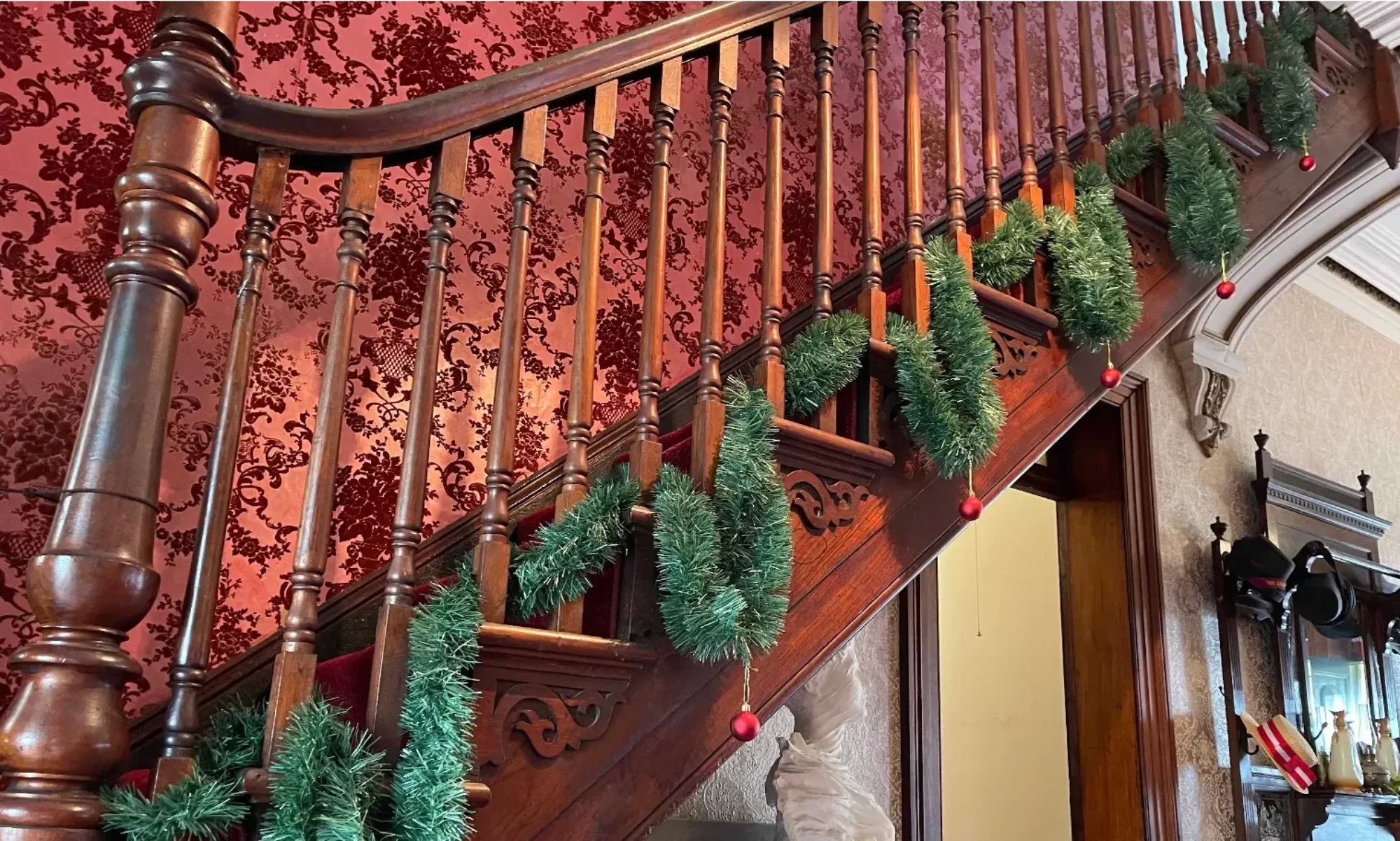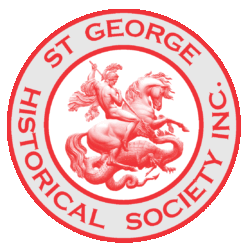May Hook
The historic “Tempe House” was built for Alexander Brodie Spark, who owned a large area of land at Cooks River in the early 1800’s, and became a director of the Bank of New South Wales in 1826.
“Tempe House” is a stately home of Georgian style set in a number of large gardens, trees, and sloping well kept lawns. According to a yellowed clipping in the possession of Miss Madeline Spark, of Roseville, a grand-daughter of Alexander Spark, the name of Tempe was suggested to the latter by its resemblance to the landscape of the Vale of Tempe in Thessaly, Greece.
The clipping says “Mr. Spark, a gentleman of means, arrived in the Colony while he was touring the world, and, being struck by the possibilities of the country he decided to remain at least for a time, but subsequently became a permanent resident”. He also was given a grant of land in Darlinghurst, by Governor Darling, where he built “Tusculum”, whose first tenant was Bishop Broughton.
Miss Spark said “Tempe House” was a show place of the era. Conrad Martens, the artist (1801-1878) painted the landscape three years after he arrived in Australia from London. His views of early Sydney are collector’s items.
“This delightful residence, the seat of A. B. SPARK, Esq., is situated on the western bank of the river named after the immortal martyr of “OWHIEE”, Captain Cook, and was selected originally as a retreat from the cares of business, yet within easy distance of the town. The spot formerly displayed all the wild features of the unbroken interior, which yielded indescribable charms to the seeker after the tranquillity of romantic retirement. The “Avenger”, has, however, broken through the once apparently impenetrable serenity which prevailed, a massive dam protruding its rude masonry to the briny waves of far-famed Botany Bay, now supplies the place of “Old Willie and his skiff”, and in lieu of the plashing of the paddle, or the joyous carol of “sweet sounds” sent forth along the, moonlit waters by a cargo of returning visitors, the echoes of “TEMPE” are now degraded to the reverberations of woodmen’s slang, and lime-burner’s orgies.
Alas, alas, truly hath the Poet written –
“Like the gale that sighs along”
“Beds of Oriental flowers”
Is the grateful breath of song
That once was heard in happier hours”.
“But these are not days of sentiment and pathos – plodding matter of fact men are in the ascendancy and taste succumbs to Mammon.
The bath, the lodge, and the garden with its fruits and its flowers still remain, but the privacy of the one hath been invaded, and the grandeur of the other, impaired, aye, and the oyster-growing mangroves temptingly inviting one to partake of their juicy dainties – where are they? Torn down by the ruthless hand of time, destroyed, and almost forgotten – yet “Tempe” thou sittest still in beauty on thy mound, and even could the vibrating chord of recollection cease to awaken in me the most pleasing reminiscences which connect they past history with mine own, I, enraptured with thy simple stateliness could ever in sincerity exclaim “With all thy faults I love thee still”.
“Tempe House” is now part of a convent conducted by the Sisters of the Good Samaritan, and is now in an excellent state of preservation.

There is a 128-year-old painting by Conrad Martens showing “Tempe House” and Cooks River, which was purchased by Mr. Stanley Lipscombe for the low price of ninety guineas. The house is situated behind rising ground a short distance from the Princes Highway. It faces the river on the north and a few hundred feet west is the main Illawarra Railway line. The house is situated between the turbulent traffic airlines. That is not all as the sky-way above is busy with air traffic coming into, and going out of Kingsford Smith Airport, one of the world’s busiest. All this is far removed from the days of “Old Willie and his skiff”.
In conclusion, it should be mentioned that Mr. Spark had a good deal to do with the establishing of the historic Church of St. Peter on the Cooks River Road, now Princes Highway, and he was buried there. He died at his Tempe residence on October 21st, 1856, aged 65 years.
This article was first published in the June 1970 edition of our magazine.
Browse the magazine archive.

